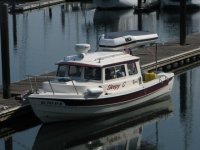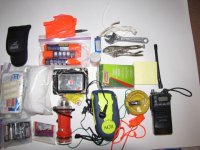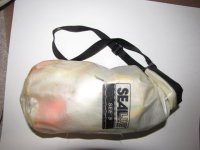Hi all,
I"m starting to go further offshore in my 22 and thinking more and more about safety. I don't have any plans to go further than say roughly 30 miles off shore. My reasons are generally in chase of fish. I"m in California SF BAY area and go to the Farralone islands, Cordell banks, and have also driven down south and launched there for Catalina island. The channel islands are also in the future. I would like to not break the bank but have a good EPRIB or PLB.
If possible I would also like to use this for back country backpacking which I do very rarely. I DO not want to compromise the quality of the device for its main use of ocean boating for a rare event of backpacking.
I understand the EPRIB is registered to the vessel and not the person, and also that the PLB needs a waterproof case floatable case, and can only be activated manually which I prefer anyway. Besides that and the 48 hour battery life is there really any advantages of the EPRIB over the PLB?
Any products/advice for my uses?
Thanks
I"m starting to go further offshore in my 22 and thinking more and more about safety. I don't have any plans to go further than say roughly 30 miles off shore. My reasons are generally in chase of fish. I"m in California SF BAY area and go to the Farralone islands, Cordell banks, and have also driven down south and launched there for Catalina island. The channel islands are also in the future. I would like to not break the bank but have a good EPRIB or PLB.
If possible I would also like to use this for back country backpacking which I do very rarely. I DO not want to compromise the quality of the device for its main use of ocean boating for a rare event of backpacking.
I understand the EPRIB is registered to the vessel and not the person, and also that the PLB needs a waterproof case floatable case, and can only be activated manually which I prefer anyway. Besides that and the 48 hour battery life is there really any advantages of the EPRIB over the PLB?
Any products/advice for my uses?
Thanks



